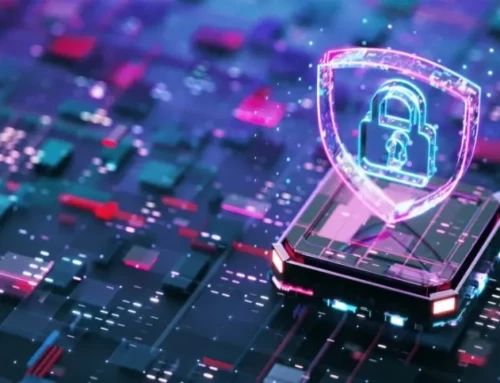Picture this: you’re in a race car speeding down the track, competing against equally skilled drivers. However, they quickly pull ahead while you struggle to keep up. The difference? They have newer, more advanced cars with the latest technology and upgrades, while you’re driving a clunky, outdated model.
This scenario is much like operating a business with obsolete IT infrastructure. Relying on a legacy system often leads to decreased efficiency, increased downtime, higher maintenance costs, greater exposure to security threats, and ultimately, losing ground to competitors. Companies must future-proof their digital infrastructure to remain competitive, and the best way to do so is through IT modernization.
What is IT modernization?
IT modernization is the process of updating and upgrading IT systems, processes, and operations to keep pace with changing technology trends. It involves implementing new software, hardware, networks, and services to improve business operations and meet current and future needs. IT modernization is not just about updating technology for the sake of having the latest gadgets, but rather to align IT with business objectives.
Why should businesses modernize their IT?
IT modernization offers a host of benefits, including:
- Increased productivity – Legacy systems can be slow, cumbersome, and require manual processes that can hinder productivity. With a modernized IT infrastructure, businesses can enjoy reliable and feature-rich technology that doesn’t break down at critical moments, helping employees become more efficient and productive.
- Better user experiences – Outdated technologies often run in isolation, making them difficult for employees to use for collaboration and information sharing . Plus, the user interfaces of old software tend to be clunky and difficult to use, causing endless frustration for employees. IT modernization typically eliminates these issues. The newest systems are designed to integrate and work seamlessly with each other, and there’s more thought put into designing user-friendly interfaces, resulting in less tech frustrations and happier end users.
- Significant cost savings – Modernized IT infrastructures are considerably less expensive to run than legacy systems. They’re more efficient and require less manual intervention, and maintenance costs are lower because modern systems get frequent software updates and improvements that keep them running smoothly.
- Enhanced security – Older systems are often more vulnerable to cyberthreats, making them a major liability for businesses. Modernizing IT infrastructures means implementing the latest security measures and installing the most recent patches to prevent potential breaches.
- Agile operations – By leveraging modern technologies, businesses can remain agile and quickly adapt to changing market conditions. This makes it easier for companies to innovate and roll out new products or services faster than their competitors.
Best practices for successful infrastructure modernization
While IT modernization can provide significant benefits for businesses, it’s crucial to follow best practices to ensure a successful transition. Here are some steps to keep in mind:
Assess your current IT environment
Before implementing your IT modernization strategy, you must have a clear understanding of your existing IT infrastructure. This involves conducting a comprehensive assessment of hardware, software, networks, and processes. Through this assessment, you can identify areas of inefficiency, bottlenecks, security vulnerabilities, and obsolete technologies. By gaining insights into the current state of affairs, you can develop a targeted modernization strategy that addresses specific pain points and aligns with business objectives.
Define modernization goals
Without a clear vision of what you aim to achieve through modernization, efforts can easily veer off course. Define concrete business goals and outcomes that you expect from the modernization initiative. For example, your goal may be to reduce errors in accounting by implementing new software, or it could be to improve customer service insights using artificial intelligence and machine learning. Whatever your goals, make sure they’re specific, measurable, achievable, relevant, and timely. This will help you stay on track and measure the success of your modernization efforts.
Establish a reasonable timeline
The timeline for your IT modernization strategy varies depending on the complexity of the existing infrastructure, the scope of the modernization, and the resources allocated. While some organizations may complete the process within a few months, others with more intricate IT systems might require a year or more. Major projects like software development or digital transformation initiatives also tend to take a long time because of the expertise, resources, and testing involved.
Leverage the right technology
Not every trendy technology will be suitable for your organization. Evaluate technologies based on features, price, scalability, and compatibility with your existing systems. Most modernization efforts will typically point toward cloud environments, as they enable businesses to take advantage of enterprise-grade servers, storage, and software without the costs associated with purchasing them outright.
Related reading: Learn about the benefits of cloud computing for small- and medium-sized businesses
If you don’t know where to start, IT consultants can help you identify and select the right mix of innovative solutions. These consultants usually have an in-depth understanding of emerging technologies and can offer impartial advice after a thorough assessment of your IT infrastructure.
Simplify your IT
Complexity is the enemy of efficiency. When you have multiple legacy systems, siloed applications, and disparate data sources, it’s challenging to incorporate new technologies and create a seamless IT infrastructure. To simplify your IT infrastructure, consolidate or retire redundant systems, eliminate unnecessary processes, carefully migrate data to centralized platforms, and standardize your systems to integrate compatible technologies.
For instance, if you’re already using Microsoft Outlook for email, it makes sense to leverage other Microsoft solutions for your business needs rather than adopting a completely different vendor. Opting for same-brand integrations rather than third-party solutions can significantly reduce complexity for system administrators while making the transition much smoother for users.
Keep security a top priority
Security should be woven into the fabric of every modernization initiative. For every new technology or solution you implement, make sure that it complies with industry standards and regulations. This means thoroughly vetting vendors and solutions for security protocols, encryption standards, and data privacy policies.
Your IT modernization efforts should also include implementing robust security policies and procedures to defend against the latest threats. These policies may include regular security training for employees, multifactor authentication, and data backup plans.
Related reading: How to improve your IT security
Notify and train employees
Modernization efforts can result in significant changes to the way employees work and interact with the IT infrastructure. To ensure a smooth transition, it’s essential to communicate effectively and provide proper training to all stakeholders. When communicating with employees, clarify the reasons for modernization and how it will benefit them. Then, outline their new roles and responsibilities, as well as any changes to processes or workflows under the new system.
As for training, give employees a chance to familiarize themselves with the new technology before fully implementing it. Conduct seminars, workshops, or one-on-one sessions to train employees on how to use the new tools and address any concerns they may have. By involving employees in the modernization process and providing proper training, you can minimize resistance to change.
Constantly review updated systems
IT modernization should be an ongoing process, where systems are continually reviewed, updated, and improved. This means regularly monitoring the performance of your modernized infrastructure and addressing any issues that arise promptly. Feedback and analytics tools that report on the usage of the new systems can provide valuable insights into possible shortcomings and vulnerabilities. Additionally, stay up to date with industry trends and new technologies that could enhance your existing IT infrastructure. By constantly reviewing and updating your modernized systems, you can ensure they remain relevant and effective for years to come.
Future-proofing IT infrastructures requires consistent effort and a well-defined business strategy. Fortunately, Dynamics Solutions Group can help you create a tailored modernization plan that aligns with your business objectives and enables success. With our expertise in cloud computing, data analytics, security, and more, we can guide you through every step of the modernization process to achieve lasting results. Contact us today to learn more.






